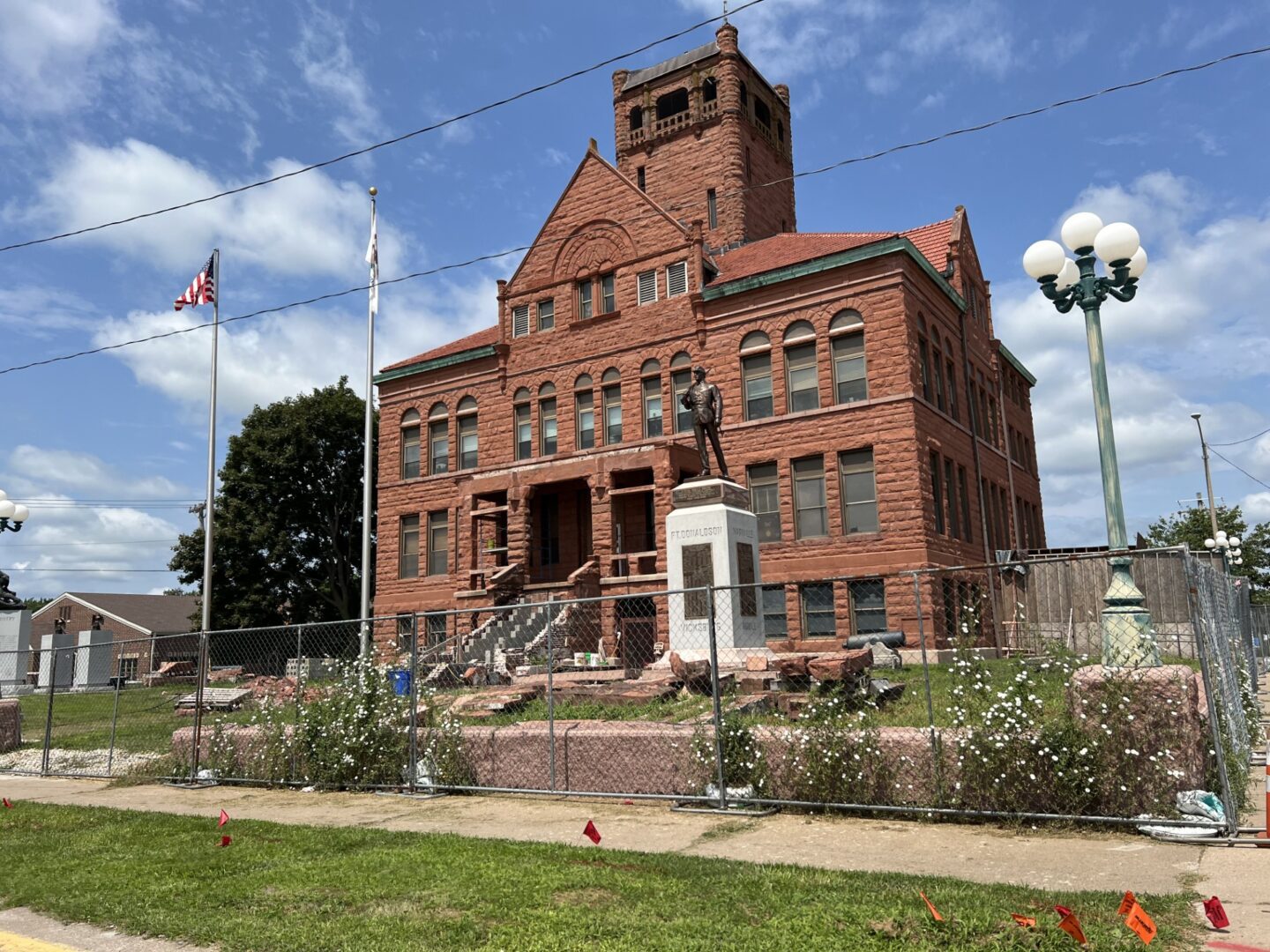By Thomas Best
Ever since I was a boy, I have been fascinated with flying. My Dad used to take me to air shows, and whenever possible, allowed me to take a short flight with an instructor. But there was more to flying than a youthful exuberance. My Dad was a tool and die maker who worked with guys who were World War II Veterans who flew in both the European and Pacific theaters. On many days, as I walked home from my junior high school, I stopped at my Dad’s tool shop and intently listened to these veterans’ stories about flying in B-24s and P-38s. Of course, I occasionally heard one of the guys jokingly criticizing the others when they made it sound as if they had won the war all by themselves. Such firsthand opportunities were further embellished in the 1960s by my love of watching “Twelve O’Clock” High on television. A weekly dramatization of a bomber group flying B-17 Flying Fortresses over Europe, this show was spell-binding.
During our last vacation, as we approached our final day of our trip traveling from Canton, Ohio back to Monmouth, I decided we had to drive through Dayton, Ohio to visit the National Museum of the United States Air Force at Wright-Patterson Air Force Base; and specifically, their World War II exhibit hall.
Today, I would like to take you on a brief narrative tour of this facility and describe the history that makes this museum a must visit for flying aficionados.
First, if you visit, I am certain that you will be amazed at an abundance of fighters and bombers here of both the allied and axis origins. Get close to the German Messerschmidt Bf-109 fighter, whose sleek design and speed make life a living hell for bombers over Europe. Look over at the easily identifiable Japanese Zero with the red ball painted on the wings and fuselage, whose proficiency in bombing and strafing shocked American service personnel when they observed Japanese pilots skillful maneuvering during their attack on Pearl Harbor.
But like me, you would probably be here to soak in the history of iconic American warbirds. I marveled at the P-51’s, which helped escort American bombers deep into Europe. I was fascinated with the Corsairs, and their unique gull wing designs which were keenly designed to take off and land aboard air craft carriers in the Pacific. However, I was mostly drawn to walk through two special exhibits—the ones highlighting the Doolittle Raiders of 1942 and the refurbished Memphis Belle, a B-17 bomber. Today, I will focus on the Doolittle Raid. Next week, we will cover the story of the Memphis Belle.
If you have never heard of, or no very little of, James Doolittle’s dangerous mission in early 1942 to retaliate against the Japanese for the “Day that will live in Infamy” on December 7, 1941, you need to come to Dayton. While there are a number of historical problems with the 2001 film, “Pearl Harbor,” this production does feature a captivating dramatization Doolittle’s raid. Beginning with Franklin Roosevelt’s order to his military staff to find a way to strike back at Japan as soon as possible after Pearl Harbor so to assure Americans that they were not down and out, you soon learn that forty-five year-old Lt. Col. Jimmy Doolittle, one of our nation’s best flight instructors and an innovator of flying by instruments, was soon given a mission that was seemingly little better than a suicidal task. It called for using one of our smallest bombers, a Mitchell B-25, to be launched as a group from an aircraft carrier, the U.S.S. Hornet. This was a bold move never considered, let alone attempted. Doolittle’s Raiders (as they became known) were a volunteer unit, flying 16 stripped down B-25’s with crews of five. They would be battling not only the challenge of releasing their 2,000 lb load of incendiary bombs over the over Tokyo, but next also flying several hundred more miles to air bases in Japanese-occupied China. They hope to land on runways operated by friendly Chinese agents and make their escape with their help. Tragically, on April 18, far before they were to launch the B-25’s, a Japanese boat was sighted. Unsure if their location was being reported to military officials, the B-25’s further stripped down heavy equipment, took on extra fuel, and took off on the carrier’s short 500-foot runway. Knowing that their available fuel made not be sufficient not to carry them all the way to Tokyo and then to safe havens in China, Doolittle’s Raiders still accepted this challenge. Anxiously taking off the heaving wet carrier deck into the wind, they had to depart about 200 miles earlier than intended. Reaching the Japanese coastline, they approached their targets in and around Tokyo and dropped their ordinance—with some errant bombs actually landing in the area of the Emperor Hirohito’s compound. With surprisingly little damage from flak and fighter attacks, the B-25’s next headed for China. One of the B-25’s with little fuel left, changed course and successfully landed in Russian held-territory farther north (a whole unique story in itself). The remainder of the brave airmen, after another 13 hours of flying, either bailed out over the East China Sea or on the Chinese mainland, crashed in China, or if very fortunate landed in China where-ever possible. Eight crew men were taken as prisoners by Japanese troops, some of these men executed or died in prison for their affront. Amazingly, Doolittle and 59 of his men survived and made it back to the U.S., where Doolittle was awarded the Congressional Medal of Honor. All of the “raiders” awarded the “Distinguished Flying Cross.” In 2014, President Obama awarded all the raiders the Congressional Gold Medal—the nation’s highest civilian award.
And while the raid actually caused relatively little damage (about 114 buildings being destroyed with an accompanying loss of life for about 90 Japanese civilians), the raid had the profound consequence of forcing the Japanese to keep some of their best pilots and fighters assigned to the region of Tokyo for the rest of the war. This surprising raid also led the Japanese military staff to insist that they had to destroy all of the American carriers; then assigned an area near Midway Island, northwest of Hawaii. This critical battle led to an incredibly devastating defeat for the Japan’s own carrier force, and thus thwarted Japan’s intentions to further weaken America’s ability to challenge their expansion across the Pacific. Back home, the positive effect on morale was immense. Indeed, Americans, once deflated by the fiasco at Pearl Harbor, suddenly felt elated. Interestingly, Doolittle, initially felt that the limited damage to Japanese infrastructure would have Americans perceive the raid as a failure. He was wrong.
The story of their mission is perfectly captured at the Air Force Museum with an actual B-25, displayed as if it was being loaded for a mission. Around the display are artifacts from Doolittle’s epic mission with everything from crewmen’s flying jackets, cameras, Mae West life jackets, and parachutes. What is particularly fascinating is the collection of shiny silver goblets that each of the survivors were given and drank front at reunions. This ceremony included until the last of the Raiders passed away in 2017.
I was so glad I came to Dayton to soak up the history of this historic mission. Standing next to this B-25, left me in awe and bewilderment, just trying to think about how such an airplane could have been launched from a short aircraft carrier runway, let alone carry out such a perilous mission with so much to lose or gain. Their story is one of incredible bravery and perseverance, along with imaginative wartime strategic and tactical creativity. How can one not stand in awe and imagine what it was like for these brave men in risking their lives to help America recover from one of its worst days in military history?
Thanks for your interest. Next week we will endeavor to follow the story of the iconic B-17 Belle which is now restored at the Air Force Museum in Dayton, Ohio.
Picture by: www.nationalmuseum.af.mil













